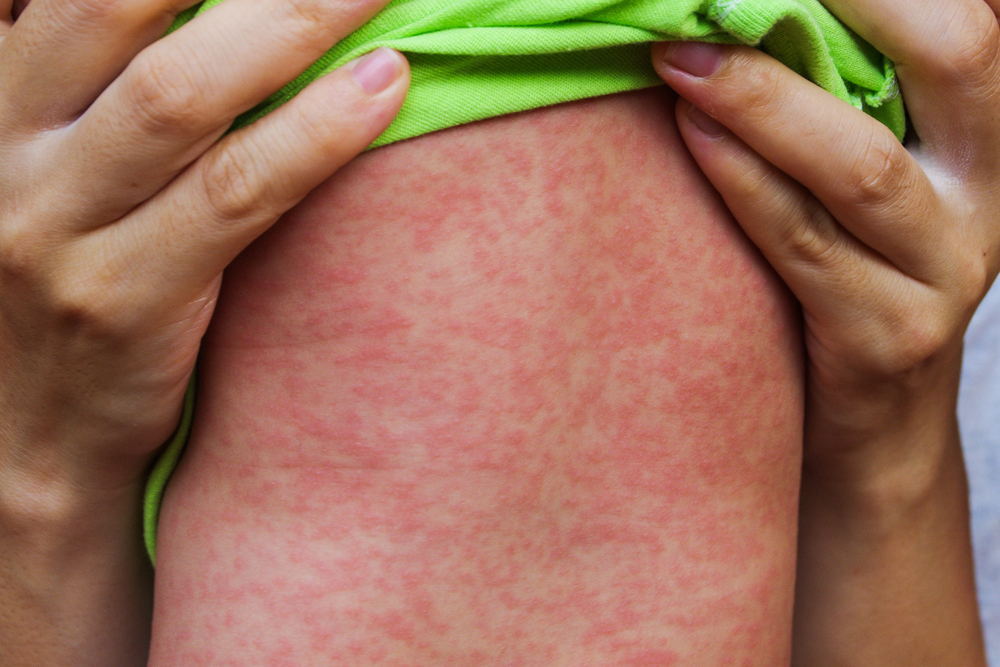Recent outbreaks of measles are spreading rapidly in communities with unvaccinated individuals. Fortunately, if you start a search online, you can understand your risk of developing measles and protect yourself.
Since 2000, the childhood disease measles was thought to be a disease of the past, all thanks to a large-scale effort to vaccinate children against the disease. But suddenly, measles is seeing a renaissance.
What is Measles?
Measles has been around for centuries. It first appeared in 1657 in Boston and was a common childhood problem for centuries to follow. It spread rapidly throughout communities, making it difficult to avoid.
And when measles is present, it can wreak havoc fast. It’s a highly contagious virus that spreads easily from person to person. Researchers estimate that 9 out of 10 unvaccinated individuals will contract the disease if exposed to someone who is infected.
Though it’s primarily thought of as a childhood ailment, measles can affect both adolescents and adults. Thankfully, due to high rates of vaccination, the disease is highly preventable.
What Are the First Signs of Measles?
The first signs of measles appear 7 to 14 days after exposure to the virus.
One of the first signs is typically a high fever, which is often accompanied by the “3 Cs”: inflamed eyes (conjunctivitis), dry cough, and coryza, or symptoms of the common cold such as runny nose, sore throat, and congestion.
You may see tiny white spots with bluish-gray centers on a red base inside the mouth on the inner cheeks. These are known as “Koplik’s spots.”
Finally, the classic splotchy red rash appears – first on the face, then eventually spreading down to the extremities. The rash spreads to the entire body over the course of a few days.
Is Measles Dangerous?
While measles sounds frightening, there’s no need to panic. Most individuals who contract the virus recover, and the infection rarely leads to death.
However, the reason this virus is so concerning is many complications may develop. This is especially common in children under age 5 or adults over 20 years old. Anyone with immune deficiency disorders, like HIV/AIDS, malnutrition, or vitamin A deficiency also face a high risk for complications.
For example, measles is a major cause of childhood blindness in developing countries. Complications of measles include ear infection, croup, inflammation of the brain (encephalitis), and pneumonia. And these three conditions are the most common causes of measles-related deaths.
In pregnant women, measles can also lead to complications such as hepatitis, premature labor, miscarriage, and even stillbirth.
What Causes Measles?
If you’re looking to avoid contracting measles, it’s important to understand its cause.
The cause of measles is the measles virus. As mentioned previously, this virus can spread quickly and easily between individuals.
When someone with measles coughs, sneezes, or talks, infectious droplets spray into the air. These droplets can be inhaled or land on hard surfaces. And if that happens, they remain infectious for several hours. If you touch an infected surface, then put your fingers in your mouth or nose, or rub your eyes, you’ll contract the disease. The virus can then freely multiply in your nose and throat, eventually creating symptoms.
Treating Measles
If you’ve contracted measles, your doctor will offer what’s called supportive treatment. Because there’s no cure for the disease, your doctor will try to help alleviate your symptoms and discomfort while the virus runs its course.
Measles can take 7 to 10 days to do this. While the virus runs its course, infected children should drink plenty of fluid, get lots of rest, and stay home to avoid spreading the infection. Fever reducers are a key component of treatment, and sick children may take over-the-counter medications, such acetaminophen (Tylenol), ibuprofen (Advil or Children’s Motrin), or naproxen (Aleve), as directed.
Antibiotics may be prescribed for bacterial complications of measles, such as ear infections or pneumonia. As children with vitamin A deficiency are more likely to have severe cases, adding vitamin A may lessen the severity of the illness.
Other helpful measures may include using a humidifier for cough and sore throat relief and avoiding direct sunlight and eye strain. Make sure to avoid excessive reading, watching television, and computer/tablet use.
How Can I Protect Myself and My Family?
Children with measles can spread the virus to others for about eight days – four days before the rash appears and four days after the rash appears. Isolating sick children from others, especially unvaccinated individuals, is a key component of preventing the spread of the disease.
For anyone who’s unvaccinated, post-exposure vaccination can be administered up to 72 hours after exposure. Pregnant women, infants (6 months to 1 year old) and people with low immunity should receive human immunoglobulin within 6 days of exposure to the virus. Both of these measures can prevent or decrease symptoms and decrease the length of illness, if it does develop.
And the best way to protect yourself and your family is to get the measles vaccine. The first effective measles vaccine was licensed in 1963. Since then, the practice of administering 2 doses of live-attenuated measles vaccine to children and even some adults to prevent outbreaks of measles has been implemented, with overwhelming success. There has been an accompanying decrease as much as 99% in measles cases.
The recent unprecedented number of newly diagnosed cases of measles underscores the absolute need for immunization to protect the greater good. There’s truly no better way to keep yourself and your loved ones free safe than this.
